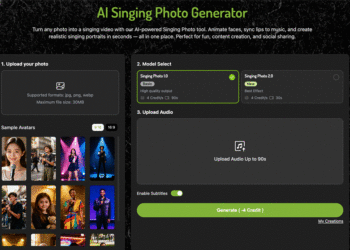The digital revolution has transformed nearly every aspect of our professional lives, and research writing is no exception. From brainstorming to drafting and editing, AI tools have become indispensable companions to students, academics, and professionals. Yet, while automation accelerates productivity, it also raises a vital question — can AI truly help humanize research writing rather than make it sound robotic?
Modern researchers face the challenge of combining machine efficiency with human depth, emotion, and nuance. The rise of sophisticated AI writing assistants has made it possible to create texts that not only meet academic standards but also retain a personal, relatable tone. Today, tools that allow us to humanize research writing are bridging the gap between automation and authenticity, helping writers maintain the human essence in their scholarly work.
The Rise of AI in Academic and Professional Writing
In the early days of automation, AI systems were designed to simplify routine tasks — grammar correction, citation generation, and plagiarism detection. But the evolution of AI models has gone far beyond mere mechanical assistance. Tools powered by AI text generator technology can now analyze context, replicate writing styles, and even suggest creative phrasing to make complex ideas more accessible.
This transformation has sparked debate among educators and researchers. A detailed look inside the university AI-cheating crisis shows how widespread generative-AI use is changing campus culture and forcing educators to rethink assessment and integrity. The key lies in how these tools are used: as partners in the creative process, not as replacements for human thought.
Balancing Automation With Authenticity
True research writing goes beyond presenting facts; it reflects the author’s voice, reasoning, and intellectual journey. However, many AI-driven texts still lack emotional resonance or narrative flow, making them sound “machine-written.” This is where humanization tools come in. By refining tone, rhythm, and context, an AI humanizer ensures that the final output aligns with the natural cadence of human language.
Rather than stripping away individuality, these systems enhance it. When researchers feed AI their rough drafts, the tools can suggest more engaging transitions, emphasize key points, and eliminate mechanical phrasing without distorting meaning. The outcome is a text that sounds human, even though it has been polished by an algorithm.
Why Humanized Writing Matters in Research
The purpose of academic communication is not just to share knowledge but to connect with readers on an intellectual and emotional level. A purely automated approach risks alienating audiences by producing sterile, detached prose. A well-balanced use of AI ensures that even the most data-heavy report maintains readability and flow.
AI tools that can write like a human enable scholars to reach broader audiences (students, policymakers, or the general public) who might not be experts in the field. Reporting on how schools and universities are responding to surging AI use highlights the shift toward practical guidelines and classroom-centered assessment strategies to preserve academic standards. This human touch is what makes research writing more persuasive and memorable.
The Role of AI in Enhancing Creativity
Contrary to the fear that AI will stifle creativity, many researchers find that these tools can actually amplify it. An AI sentence generator, for example, can help rephrase dense academic paragraphs, turning them into clearer, more engaging narratives. Instead of spending hours on stylistic refinement, authors can focus on developing insights and interpretations.
The creative collaboration between human intellect and AI computation fosters innovation. When properly guided, AI doesn’t replace the researcher — it becomes a co-author that accelerates the ideation process, offering new linguistic structures or perspectives that the human writer can build upon.
How to Make AI Write Like a Human
The secret to effective collaboration with AI lies in careful prompt design and post-editing. Writers must learn how to make AI write like a human by giving the model sufficient context, tone cues, and examples of preferred style. The more detailed the input, the more natural and coherent the output will be.
Post-editing is equally crucial. Researchers should treat AI drafts as starting points rather than final versions. By adding personal commentary, reflective transitions, and emotional nuance, authors can elevate machine-generated text into something truly authentic. This process mirrors the peer review stage of academic publishing — AI proposes, but the human author disposes. It’s a dialogue between machine precision and human judgment.
Ethical Dimensions of AI-Assisted Research Writing
While AI tools offer immense benefits, they also raise ethical and methodological concerns. Misuse, such as submitting AI-generated papers without disclosure, undermines academic credibility. Transparent collaboration between human writers and AI tools ensures integrity while allowing researchers to take full advantage of technological advances.
The solution is not to ban AI but to integrate it responsibly. Universities and publishers are increasingly developing guidelines for ethical AI use in research, emphasizing transparency, originality, and critical engagement. These evolving frameworks will shape the future of academic communication.
The Future: A Partnership Between Humans and Machines
As AI continues to evolve, the goal is no longer just automation — it’s augmentation. A future where machines help humans write better, not instead of them, is already emerging. AI systems can handle repetitive language tasks, freeing researchers to focus on creative reasoning and theoretical innovation.
However, human oversight remains irreplaceable. Machines can mimic patterns, but they cannot truly understand context or empathy. The human brain, with its blend of logic and emotion, will always be the ultimate editor. The art of writing lies not only in accuracy but in storytelling, and that is something uniquely human.
Embracing the Human-AI Synergy
The convergence of artificial intelligence and academic writing represents one of the most promising frontiers in modern education and research. By using tools such as AI humanizers, text generators, and contextual editors, today’s scholars can streamline their workflow without compromising authenticity.
In essence, the future of research writing isn’t about choosing between man and machine; it’s about partnership. With thoughtful use, these tools can help every human write with clarity, compassion, and creativity, even in the most data-driven environments.
As technology and academia continue to intersect, the writers who succeed will be those who embrace AI not as an adversary, but as an ally — an intelligent assistant capable of turning automation into artistry. The key lies in balance: letting AI handle the structure, while humans preserve the soul.
David Prior
David Prior is the editor of Today News, responsible for the overall editorial strategy. He is an NCTJ-qualified journalist with over 20 years’ experience, and is also editor of the award-winning hyperlocal news title Altrincham Today. His LinkedIn profile is here.











































































